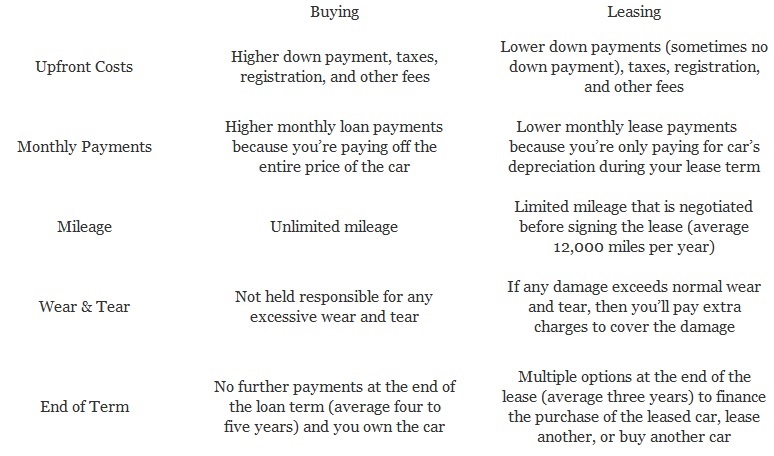There’s been a reoccurring theme in the financial services industries surrounding a 401k rollover. A simple Google search of the topic loads thousands of results. Many of the big investment firms spend millions of marketing dollars to rank for the “401k rollover” search term just so they can convince you to perform a 401k rollover to their management platform. And I know what you’re thinking…”aren’t you an investment firm also interested in my 401k rollover?” And the answer is “yes, I am…but only when it’s in your best interests.” Recall that we are a fiduciary and must always recommend what is best for you, even if it means not doing business with us. And there are times when a 401k rollover is not the best option for you just as there are times when it is. The Department of Labor is finally catching on to this long-running practice and is proposing that all advisors on 401k plans act as a fiduciary in their approach, especially when recommending a 401k rollover to a client. The details of their plan are far from being solidified but the good news is that this fiduciary standard is designed to protect you and your hard-earned dollars and we fully support the DOL’s efforts. Can you believe there are advisors who do not have to do what is in your best interests? We can’t either.
The story these investment firms tell to convince you to do a 401k rollover is that of greater investment options, control of your money, continued tax-deferred growth, and unlimited portability. And while these are all true, most of these same benefits are also available inside your existing plan.
I’ll refrain from defining a 401k in this post as you likely understand what a 401k is and how it benefits your retirement plan. What you may not fully understand is what happens to your 401k when you no longer work for that employer. And this unknown is manipulated into uncertainty by investment firms when they market “don’t leave your 401k behind” as if to subconsciously suggest that your 401k would be in jeopardy if you no longer work for the company. This couldn’t be further from the truth. The money you earned and contributed pre-tax to the plan is, and always will be, yours no matter what happens to the company. Depending on the plan structure and vesting schedule, even the matching contributions that you are legally entitled to will be yours no matter what happens to the company. So don’t be misled by this fake fear.
Now that you know your money is safe, as in, not in jeopardy of being consumed by the company in the event of insolvency or similar, in the old 401k plan, let’s outline your possible options and when each may fit your best interests. Please note, if your money is invested in the stock and bond markets, it is still subject to loss of principal and the risks associated with being invested.
401k Rollover Option 1: Transfer the Money into your New 401k
If you’ve moved onto another job that offers a 401k plan, you can combine your old 401k with your new one when you become eligible to contribute to it. Your plan sponsor will be able to give you all of the details and paperwork to accomplish this simple transfer. And here’s why this option may benefit you:
- If you’re a younger employee, combining small balances into one account helps you keep everything all together as you build a dollar cost averaging plan into your payroll deductions.
- The IRS allows you to borrow against 401k money and set up a payroll deducted loan payment back to yourself versus having to take a straight withdraw from an IRA and possibly incurring taxes and penalties. This rule difference may make sense if you know you might be or are inclined to be in a financial pickle in the future.
- Tax deferred growth continues and the transfer is considered tax-free (meaning no taxes are due when you combine the two accounts).
- If the expense ratios of the investment options inside of the new plan are cheaper than your old 401k, you may achieve cost savings by combining the accounts.
- A higher balance 401k may offer you better incentives when seeking advice from your plan sponsor.
- Ability to gain access to additional investment options, if available.
Why combining with your new 401k may not make sense:
- Investment selection is more restrictive and/or more expensive than your current plan.
- You’re giving up access to a reputable investment firm who you may feel comfortable with.
- Your new plan doesn’t allow transfers (this would be rare in our experience).
- You lose certain guaranteed benefits when transferring –especially when your 401k is a variable annuity with enhanced living benefit riders (these riders traditionally have expenses associated with them, so it’s important to analyze their value as well).
Most important items to consider:
- Fees – always consider both management fees, plan fees, and fund expense ratios. Just because a fund is cheap doesn’t mean it’s the best value for you and the same is true for more expensive funds.
- Range of investment options – more options tend to give you greater flexibility to adjust your allocation if the economy dictates, but too many investment options can become overwhelming to new investors.
- Loss of benefits or gain of new benefits – comparing the “all-in” costs versus value relationship is a must.
- Your new employer won’t make matching contributions to your transferred balance, so don’t think you can game the system, smarty pants.
401k Rollover Option 2: Leave the Money in your Old 401k
I think we’ve made it pretty straight forward in your ability to know that you don’t have to rollover your 401k. Just as you analyzed the option to combine the 401k with your new one above, it may well make sense to simply leave the account alone. The only considerations not mentioned above are:
- If you believe your old company has an executive inability (incompetent plan administrators) to adequately manage the investment choices going forward, it may make sense to remove your hard-earned money from their oversight.
- If your balance is below a certain level as directed by the plan documents, you may be forced to move your account. We’ve seen minimum balances as high as $5,000 for non-participant, former employees.
401k Rollover Option 3: Cash it out (take a Lump Sum Distribution)
This option is the one that will likely hurt the most when the tax man comes in April. If you’re under age 59.5, you’ll pay ordinary income taxes plus a 10% early withdraw penalty. High income earners could see close to half of their retirement savings wiped away by choosing this option. In addition to giving large sums of money to the IRS, you lose out on future tax-deferred earnings benefiting from compound interest growth. In our experience, no matter how you look at it, this option rarely makes sense. Even if you are in severe debt and the taxes you’d pay are better than whatever situation you’re in, you could still avoid the 10% penalty by rolling the account to an IRA and then set up what’s called a 72t distribution. There is a lengthy list of rules regarding this specific IRS rule so please give us a call if you think this may make sense for you. We’ll work with your accountant to develop a plan that fits you.
401k Rollover Option 4: Rollover to an IRA
Let’s say that you’ve determined that the other 401k rollover options aren’t that attractive. Now it would be time to analyze rolling over your 401k to an IRA. This is where you’ll want to look at various companies and what they may propose. Just as you reviewed your new 401k, you’ll want to consider:
- Fees – management fees, expense ratios, trading costs, commissions, mortality & expense charges, loaded funds, etc. Some or all may apply depending on who you’re speaking with. If the fees are significantly higher in one company versus another, ask why. Do your research before committing and don’t be afraid to ask – all advisors must disclose how they are compensated and what your “all-in” fees will be. If they don’t tell you or it’s still vague, run far and fast. Stick to the old adage: if it sounds too good to be true, it usually is.
- Management approach – how will your account be managed? Passive, top down, bottom up, active, cyclical, etc. When will trades occur and how often? How often will review meetings occur and what can you expect during those meetings? Will the account be managed on a discretionary basis or will they need permission to make adjustments each time?
- Investment allocation – what mix of stocks and bonds, sectors, styles, and approaches will you take? Will alternative asset classes and commodities (rarely offered in 401k plans) be a major component of the mix? How about structured products and limited partnerships? IRAs have the ability to invest in many types of asset classes that can’t be found inside of typical 401ks. Even investing in hard assets like real estate and physical metals such as gold and silver can be accomplished given the right, qualified custodian. Keep in mind the more non-traditional your selection, the more rules there tend to be.
- Value added services – if fees are higher, are additional services included to justify the increased costs? Is a financial plan, budget guidance, or debt management included? How often advice is rendered – unlimited or certain number of times per year? Is the management approach the reason for higher fees? It can often make perfect sense to pay higher fees when the value of services offered is considered. Having an advisor that you can trust to help you manage your financial life can be a huge relief to the burden this may cause.
- Type of advisor – not all financial advisors are the same. Some earn commissions on trading activity while others are fee-only. Some tend to be a hybrid of both types and how they operate at different capacities can be vague (think of the DOL rule we talked about earlier in this post). Not to tout ourselves, but we believe it’s best to work with a fiduciary; a person who must keep your best interests at the forefront of every decision they make.
- Special tax considerations – if you own the stock of the employer you work for, you may want to consider leaving the stock in the 401k. There are special tax considerations to analyze with a qualified CPA that allows this type of stock to be taxed when withdrawn at a rate lower than ordinary income taxes. We’ll help you work with your accountant in analyzing if this fits your situation.
The decision you make with your 401k rollover is very important and shouldn’t be taken lightly. Don’t assume that because it seems like everyone rolls over their 401ks to an IRA, that it’s the best option for you. Your situation is drastically different than your friends and family. You are unique and so too should your money management plan. Outside of your personal home, your 401k is most likely the largest asset you own and will naturally become the cornerstone to your retirement income. We want to be your trusted financial partner to help you determine which option is best given your unique circumstances. We are a Johns Island Financial Advisor who builds financial plans and investment strategies for our clients. Anywhere you want to go; we’re here to help guide you along the way. Let’s start a conversation today.
Image Credit: Flickr





